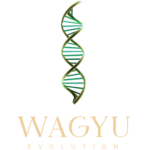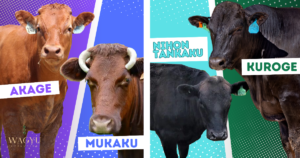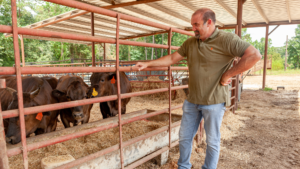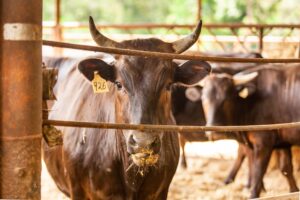The Revival Of A Legend
Table of Contents
Cloning in the context of livestock can be done in two main ways: fertilized egg cloning and somatic cell cloning.
Fertilized egg cloning involves taking a fertilized egg and splitting it to create multiple embryos, which then develop into genetically identical animals. It’s like creating identical twins, but more than two, from a single fertilized egg.
On the other hand, somatic cell cloning is more complex. It involves taking a body cell from an animal with desirable traits and inserting its nucleus into an egg cell with its own nucleus removed. This egg cell then develops into an animal that is a clone of the one from which the body cell was taken.
While fertilized egg cloning is simpler and has been used longer, somatic cell cloning allows for cloning of adult animals with proven traits, though it currently has a lower success rate and more technical challenges. But somatic cells possess a lot more opportunities such as revival of famous sires that have passed.
The Revival Of Yasufuku
Yasufuku was a distinguished sire bull active during the 1980s, significantly contributing to the establishment of the Hida beef brand, earning him the title “Father of Hida Beef.” He was an essential figure in the history of improving Japanese Black cattle breeds. Approximately 150 sire bulls carrying Yasufuku’s bloodline have been born nationwide. It is estimated that over 30% of Japanese Black cattle across the country are descendants of Yasufuku.
Yasufuku passed away on September 28, 1993. The Gifu Prefecture Livestock Research Institute (Director: Kenji Sakai, Takayama City, Gifu Prefecture) extracted his testicles and preserved them in a -80°C freezer, wrapped only in aluminum foil. This was during a time when somatic cell cloning technology did not exist, but there was hope that future technologies might revive Yasufuku’s genetic material.
Yasufuku’s testicles were frozen for ten years at -80°C without any special treatment, which was thought to have destroyed the cells due to freezing damage. However, researchers succeeded in obtaining a small number of live cells from specific parts of the frozen testicles and culturing and multiplying them. This breakthrough allowed the birth of somatic cell clone bulls from Yasufuku’s testicles, which had been frozen for 13 years.
The Birth Of Yasufuku’s Clones – Nozomi Yasufuku
In a joint effort by the Gifu Prefecture Livestock Research Institute and Kindai (previously called Kinki) University, they succeeded in extracting live cells from Yasufuku’s frozen testicles and producing the somatic cell clone bull “Nozomi Yasufuku.”
Between November 2007 and July 2008, four cloned bulls were born. One died two days after birth, and another, despite being healthy for over five months, died on January 7, 2009, due to an infection.
The remaining two bulls are still healthy. This joint research was conducted by Chief Researcher Yoichiro Hoshino from the Gifu Prefecture Livestock Research Institute and Professor Kazuhiro Saeki from the Faculty of Biology-Oriented Science and Technology at Kinki University. The results were published in the American online science journal.
Live, normal cells can remain in the frozen organs of cattle, and these cells can develop into individuals through cloning technology. This means that livestock and animal genetic resources can be easily preserved by simply freezing organs and tissues. Moreover, if tissues from extinct animals are frozen, they might be regenerated using cloning technology. This could be possible not only with artificially frozen specimens but also with animal tissues trapped in permafrost, such as those of mammoths.
The birth of Nozomi Yasufuku revived Yasufuku’s genetic resources from a “dead” to a “living” state. By studying Nozomi Yasufuku, researchers can now explore the secrets of Wagyu beef’s deliciousness using advanced techniques like gene expression analysis and protein analysis, which were not available when Yasufuku died in 1993.
In response to consumer distrust of cloned meat, the Ministry of Agriculture, Forestry and Fisheries (MAFF) currently requests research institutions to take voluntary measures to prevent cloned cows from ending up in the food supply.
The Use Of Cloned Animals In The Food Industry
In contrast to the UK and Japan, which forbid the introduction of cloned animals into the food chain. The USA has utilized this technology. The foundation sire Itozurudoi TF151 was dead when his offspring were examined, and his worth was ascertained, leaving a very small amount of semen.
This makes him the costliest foundation sire in the Wagyu breed because it is very hard to get this semen, which can cost $13,000. With the lack of supply, Takeda deemed to be so important for his breeding program that they cloned him four times, making his genetics more available. These advancements in obtaining usable cells in the frozen tissue for cloning can open up avenues for obtaining more genetics for herds outside of Japan by using frozen tissue (steaks).
References
Hoshino, Y., Hayashi, N., Taniguchi, S., Kobayashi, N., Sakai, K., Otani, T., Iritani, A., & Saeki, K. (2009). Resurrection of a Bull by Cloning from Organs Frozen without Cryoprotectant in a −80°C Freezer for a Decade. PloS One, 4(1), e4142. https://doi.org/10.1371/journal.pone.0004142
Saeki, Kazuhiro (2014). Principles of Cloning || Biological Age of Cloned Animals. , (), 419–428. doi:10.1016/B978-0-12-386541-0.00033-3



